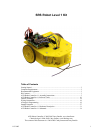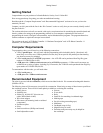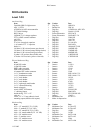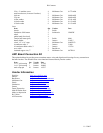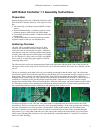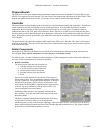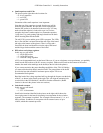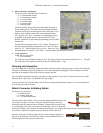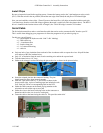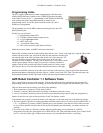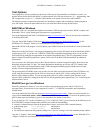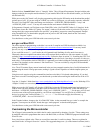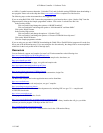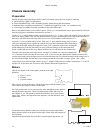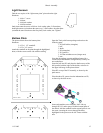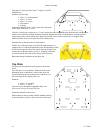Getting Started
Getting Started
Congratulations on your purchase of a Seattle Robotics Society Level 1 Robot Kit!
Here are suggested steps for getting your robot assembled and running.
Read through the “Computer Requirements” and “Recommended Equipment” sections to be sure you have the
materials you need.
Compare your kit’s parts with the lists in the “Kit Contents” section to verify that you can correctly identify each of
the parts in the kit.
The sections after that work well as a tutorial, with step-by-step instructions for assembling the controller board and
chassis, guidance for setting up the programming software on your computer, explanations of the basics of
programming the Atmel ATmega16 microcontroller, and an introduction the programs. The programs themselves
contain comments to explain the concepts in more detail.
The sections at the end, “AVR Robot Controller 1.1 Hardware Description” and “AVR Robot Controller 1.1
Schematic,” are included for reference.
Computer Requirements
To program the robot, you will need one of the following connections:
• a DB-25 parallel port -- this will work with the programming cable included in the kit. (Note that it will
most likely not work to use a USB-to-parallel converter; they do not provide full parallel port functionality,
just what's necessary for printing!)
• a DB-9 serial port and an AVR-ISP programmer -- the AVR-ISP can be purchased from Digi-Key (part
number ATAVRISP-ND) for $29.
• a USB port with a USB-to-serial converter and an AVR-ISP programmer -- USB-to-serial converters are
available from a variety of places, including Fry's Electronics; the AVR-ISP can be purchased from Digi-Key
(part number ATAVRISP-ND) for $29.
To communicate with the robot, you will need either:
• a DB-9 serial port, or
• a USB port with a USB-to-serial converter.
Recommended Equipment
The robot is powered with 6 AA batteries, which are not included in the kit. We recommend rechargeable batteries
(NiMH or NiCd).
The following items will be necessary (or useful) for construction. Please bring as many of these items as possible to
the workshop sessions. There will be a small quantity available to use during the workshop.
• Safety glasses
• Soldering iron
• Solder (e.g. 60/40 0.032" dia rosin core
solder, Radio Shack 64-005)
• Wire cutter/stripper
• Side cutters (for trimming leads on soldered
components)
• Needlenose pliers
• Pliers
• Small screwdrivers (Phillips and slotted)
• Small adjustable wrench
• Scissors
• X-acto knife
• Ruler
• Small file for smoothing circuitboard edges
• Masking tape
• Pen (for writing on masking tape)
• Multimeter
• Cardboard (scrap is fine)
• Magnifier may be useful
• Extension cord/power strip may be helpful at
the workshops
2 11-3-2005



